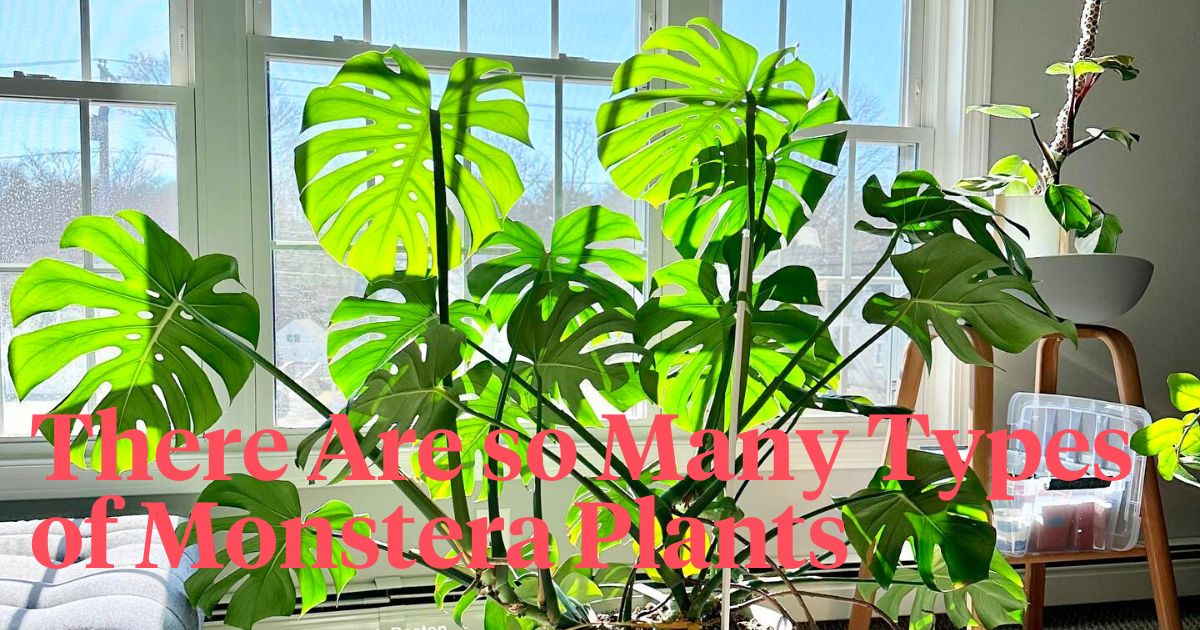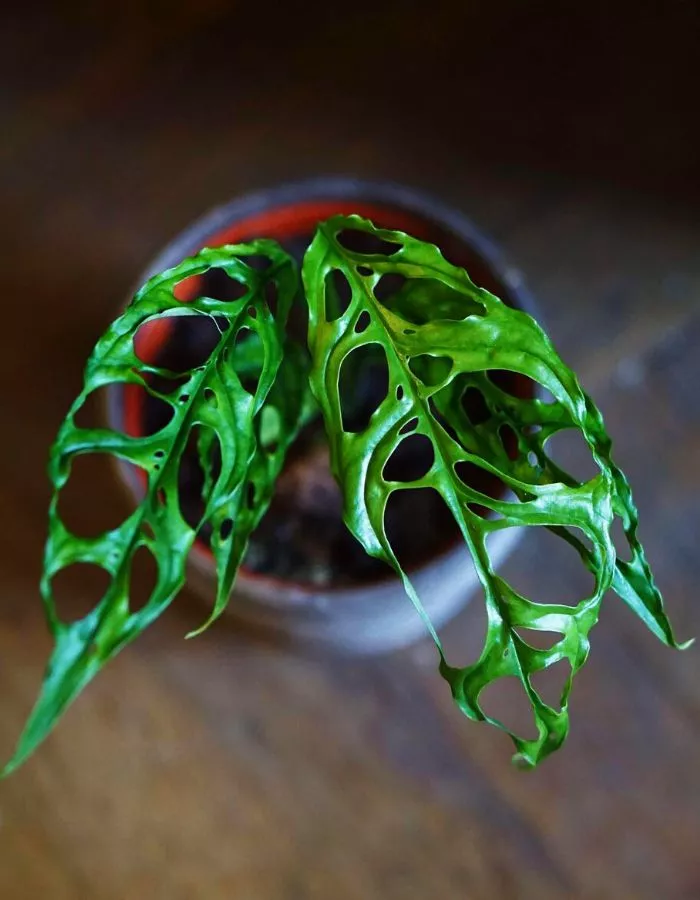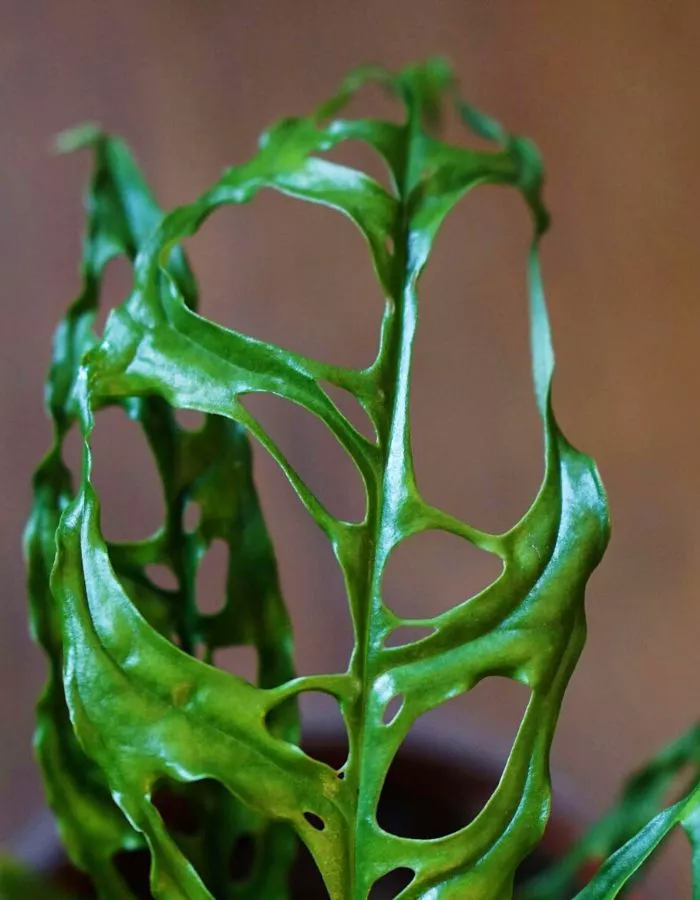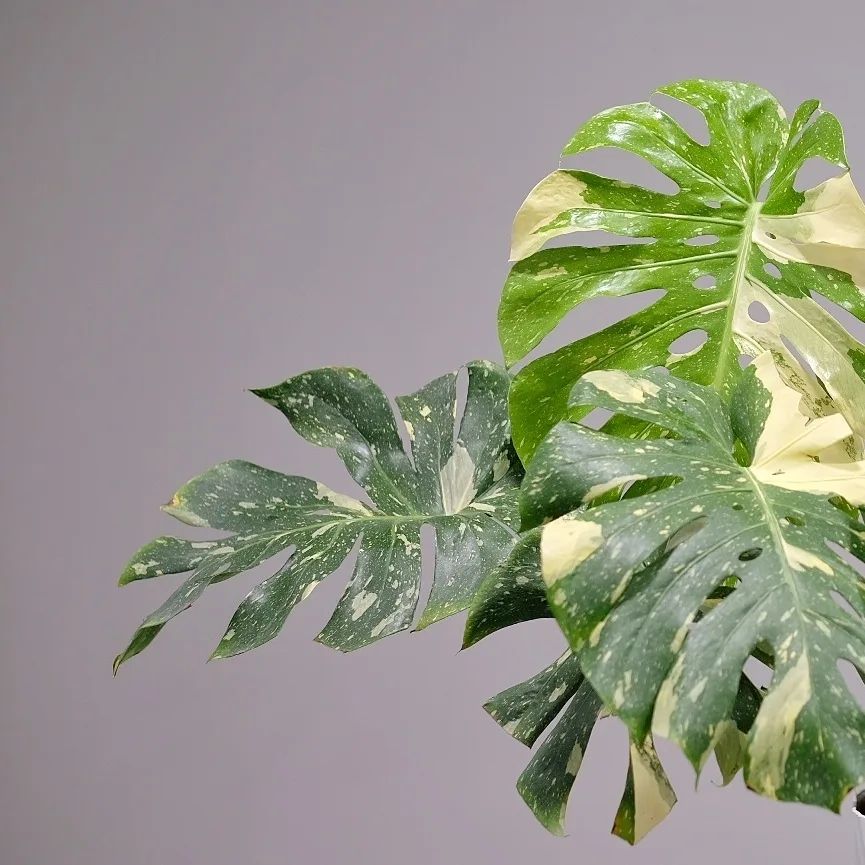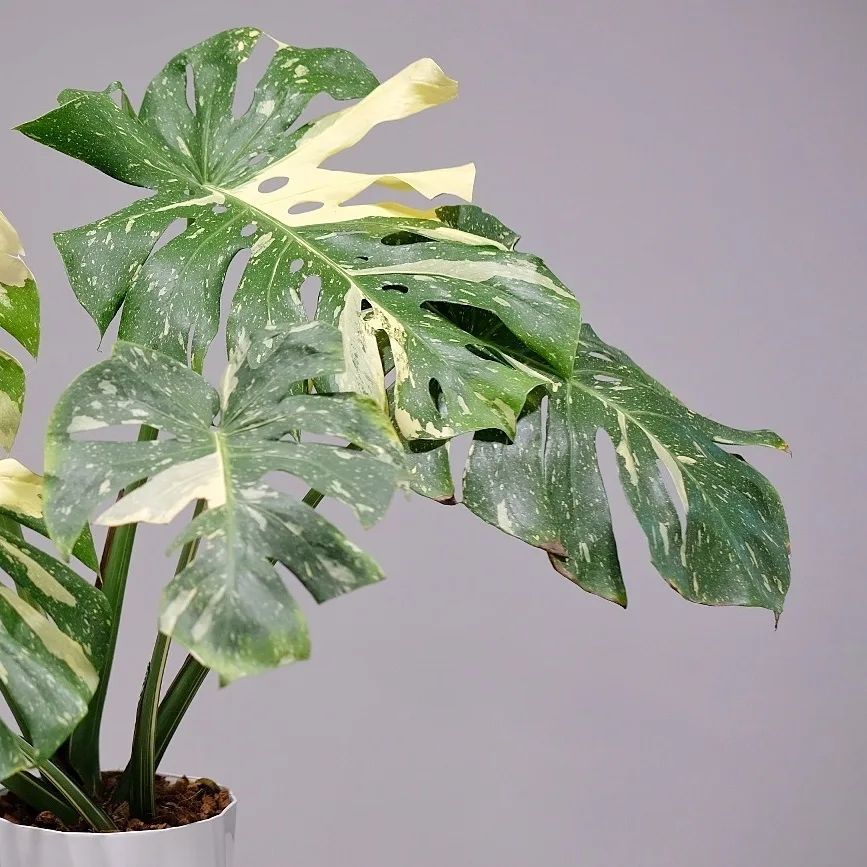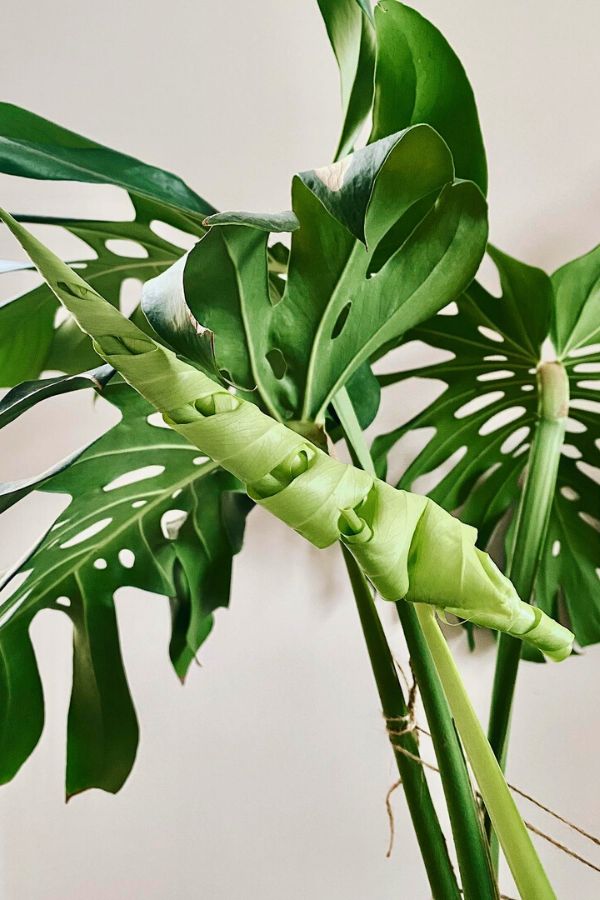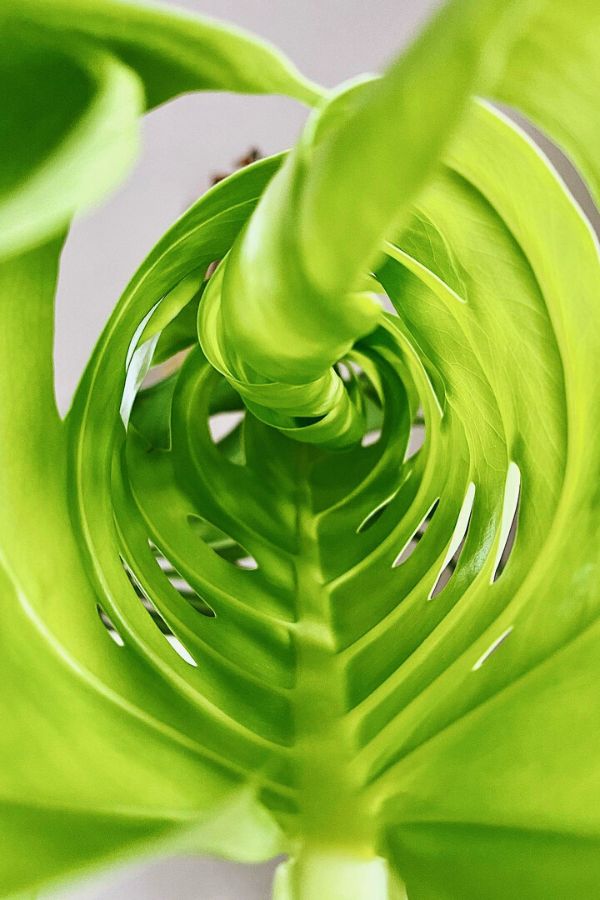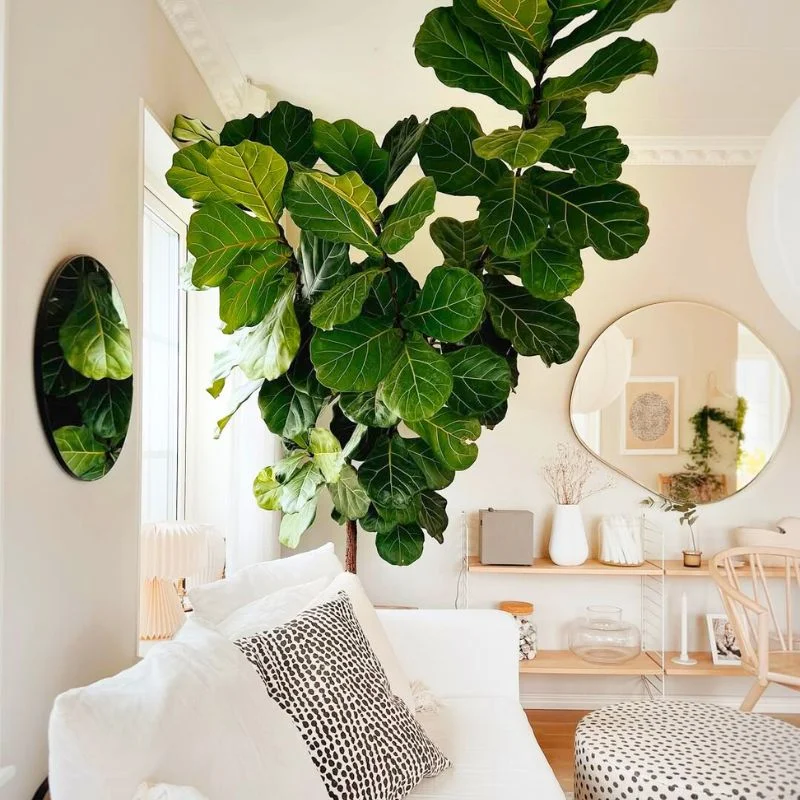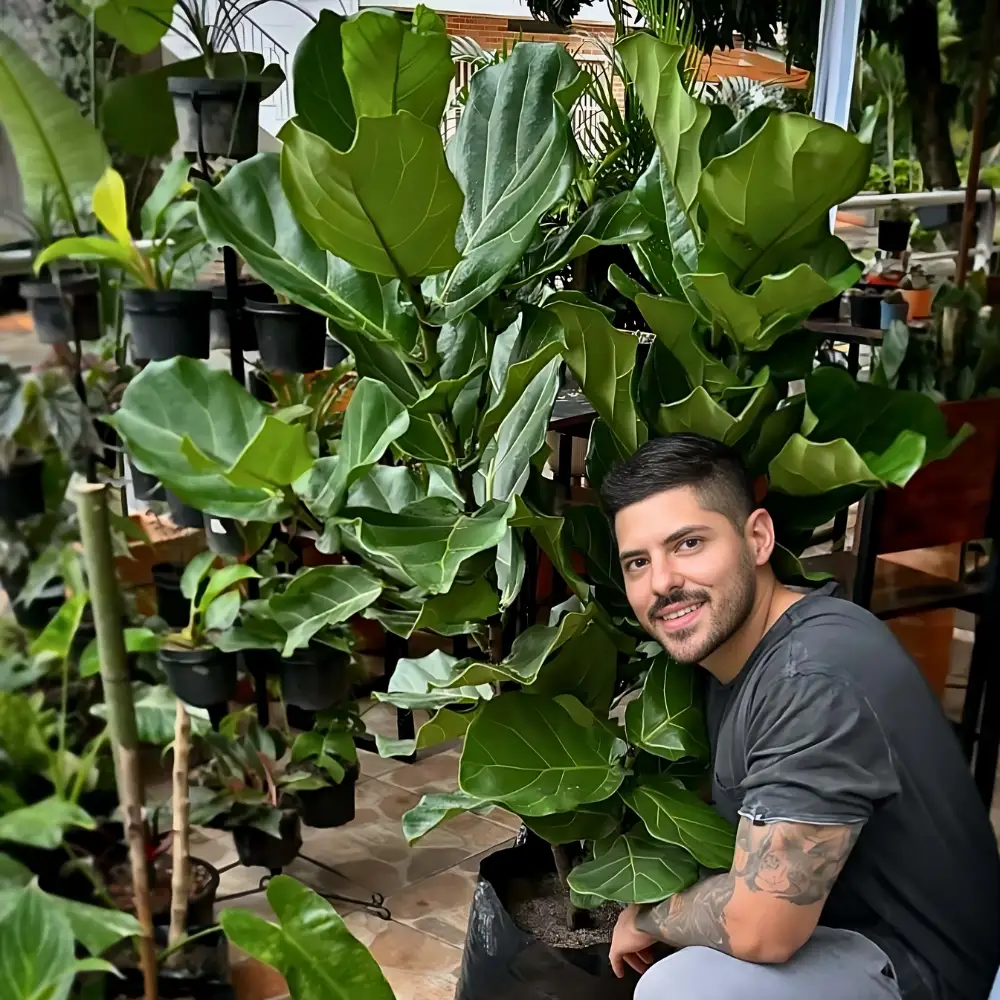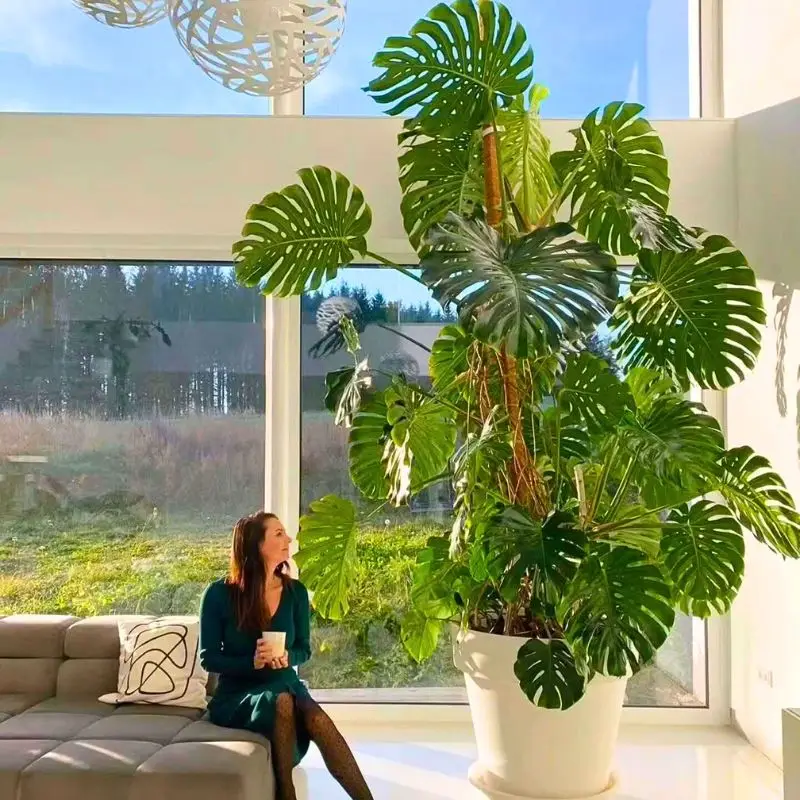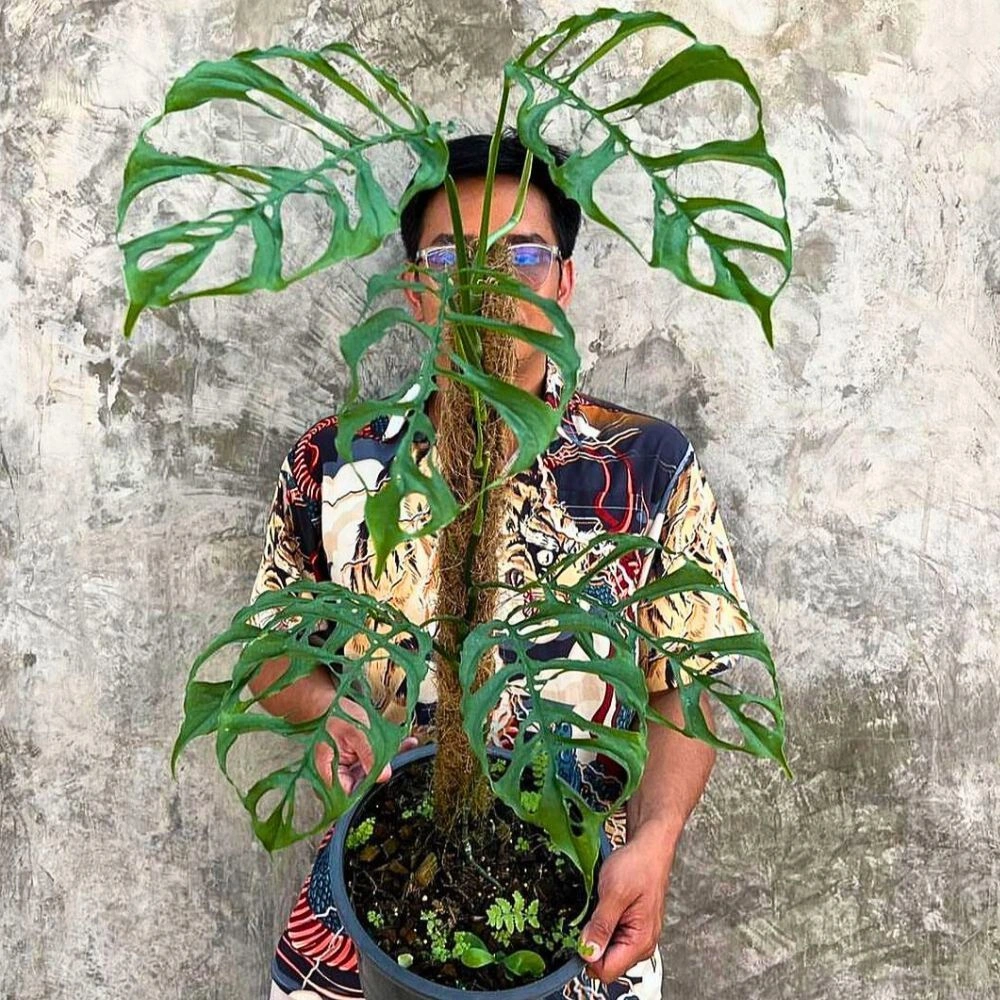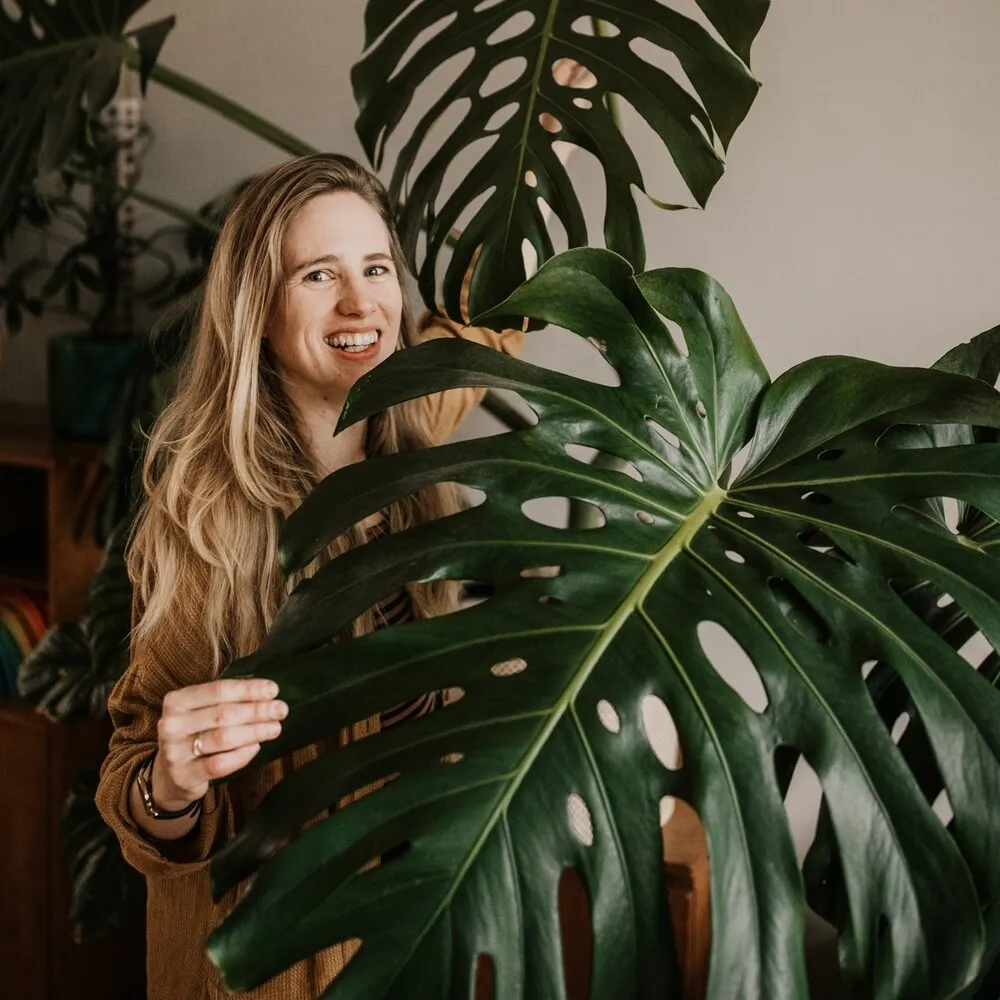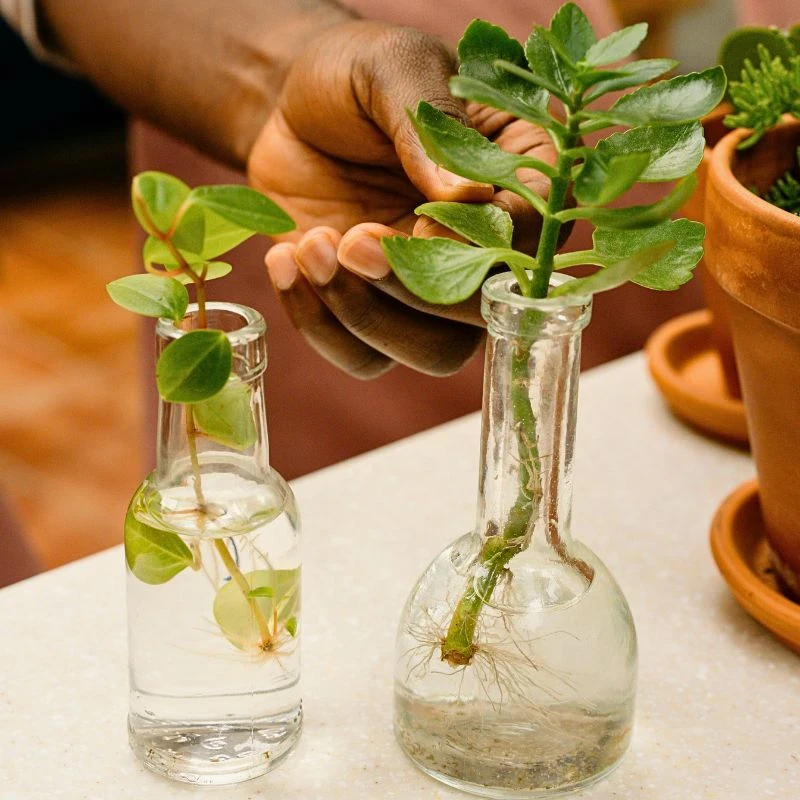The resurgence of Monstera plants in homes worldwide can be likened to the 1970s when large-leafed plants ruled the interior design scene. It's no wonder that different types of Monster varieties s have captured the hearts of plant enthusiasts everywhere! These majestic, tropical beauties effortlessly transport us to lush rainforests, infusing our homes with an air of adventure and relaxation. Their bold, split leaves not only make a dramatic design statement but also bring life and energy to any space they grace.
The Most Popular Types of Monstera
There are many types of Monstera plants. This is a Monstera variety list of the most popular and commonly found. Keep in mind that new cultivars may be introduced over time, and some of these varieties may be more difficult to find than others.
- Monstera deliciosa & Monstera deliciosa Tauerii
- Monstera borsigiana
- Monstera adansonii
- Monstera siltepecana
- Monstera pinnatipartita
- Monstera dubia
- Monstera sp. Peru
- Monstera obliqua
- Monstera standleyana
- Monstera lechleriana
- Monstera 'Thai Constellation'
- Monstera 'Albo Variegata'
- Monstera 'Aurea Variegata'
- Monstera Esqueleto
Monstera Varieties Give You That 'Indoor Jungle Feeling'
As modern life becomes increasingly urbanized, many people yearn for a stronger connection to nature. Indoor plants, like all the types of Monstera, bridge that gap, allowing us to create our very own green sanctuaries at home. The remarkable, large leaves of Monstera plants act as natural air purifiers, improving indoor air quality while reducing stress and promoting a sense of well-being. The nurturing and care these plants require also foster a sense of responsibility, mindfulness, and accomplishment, further enriching our lives.
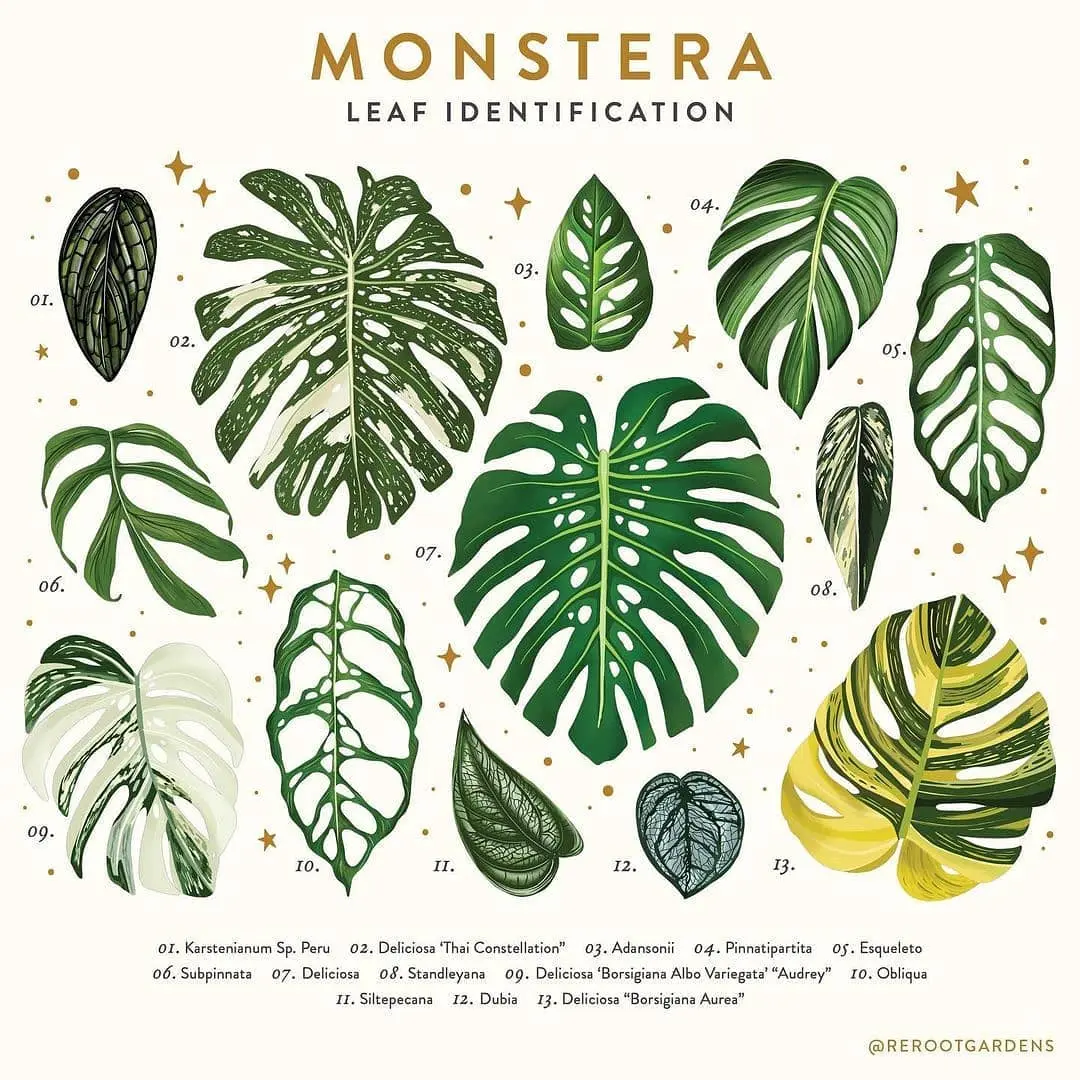
The Monstera craze is a testament to our deep-rooted desire to connect with the natural world, even within the confines of our homes. As you explore the fascinating world of Monstera varieties, each with its unique charm and allure, you'll discover the perfect addition to your indoor jungle. Dive into all the wonderful different types of Monstera and embark on a journey to bring the spirit of the tropics right into your living room.
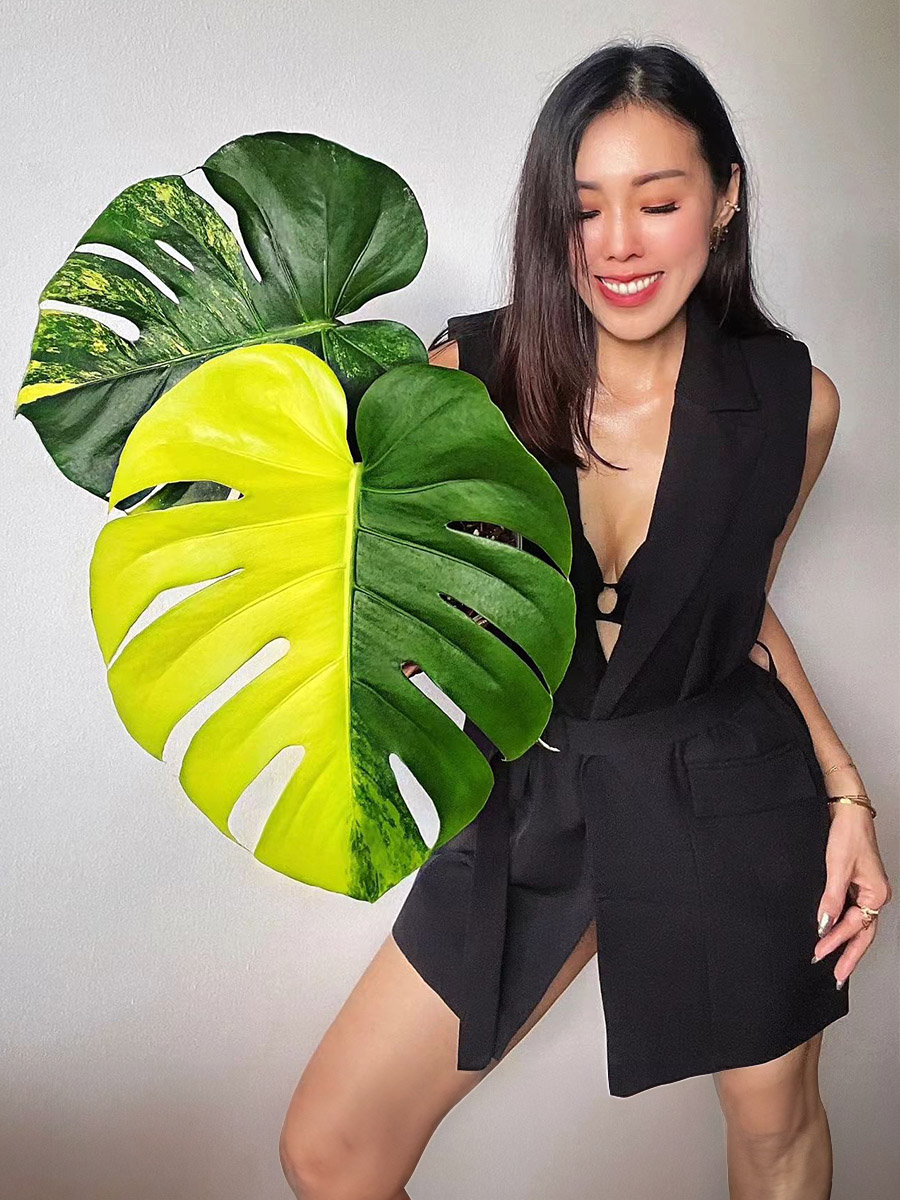
These are the Monstera varieties:
1) Monstera Deliciosa
Meet the star of the Monstera world! With its iconic, large leaves adorned with natural holes, this Central American beauty transforms any space into a tropical haven. Get ready to wow your friends with its delicious, pineapple-banana-like fruit!
There might be other less common or locally developed cultivars that exist within the Monstera deliciosa group. Plant cultivars can sometimes be bred or selected for specific traits like size, growth habit, or variegation patterns, and new cultivars may emerge as growers and enthusiasts continue to experiment with these stunning tropical plants.
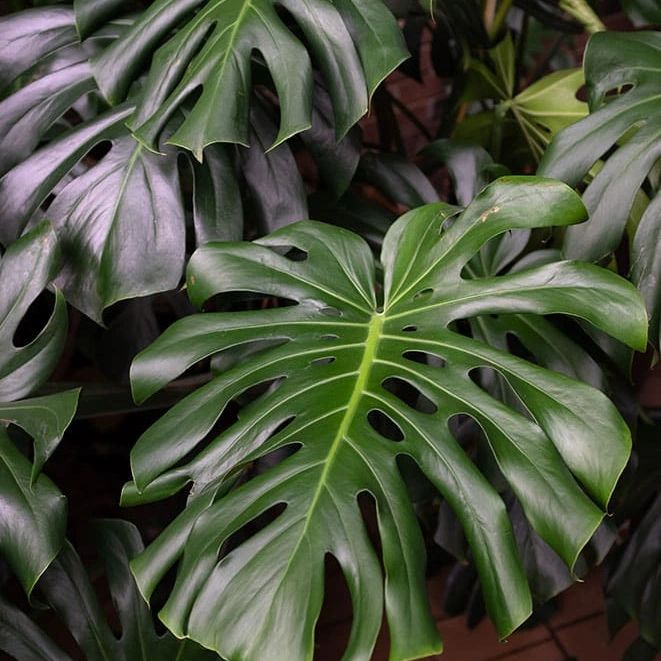
Otherwise known as the 'Swiss Cheese Plant', this houseplant is one of the most used around the world to achieve an aesthetic, simple, and Scandinavian interior. Want to know more? Read the article '5 Houseplants That'll Help You Achieve a Scandinavian Interior'.
Monstera Deliciosa Tauerii
A good example is the Monstera deliciosa Tauerii which is known for its more compact size and slower growth rate, making it an excellent choice for those who love the classic Monstera look but have limited space. Its leaves still develop iconic fenestrations and split as they mature, and it can be a beautiful addition to any indoor plant collection.
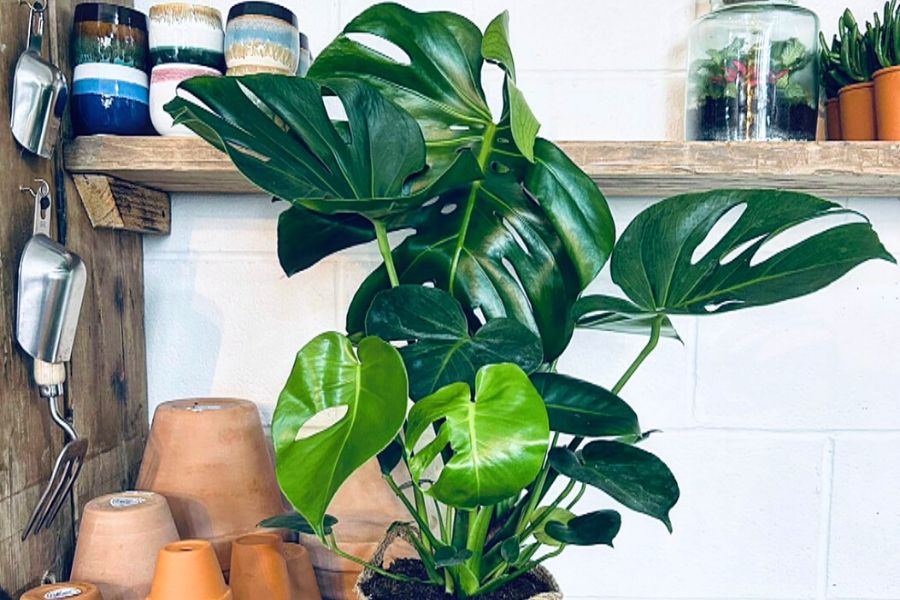
2) Monstera Borsigiana
A close cousin of Monstera deliciosa, this petite and fast-growing stunner delights with slightly smaller leaves. Perfect for those who crave the lush Monstera look without overwhelming their space!
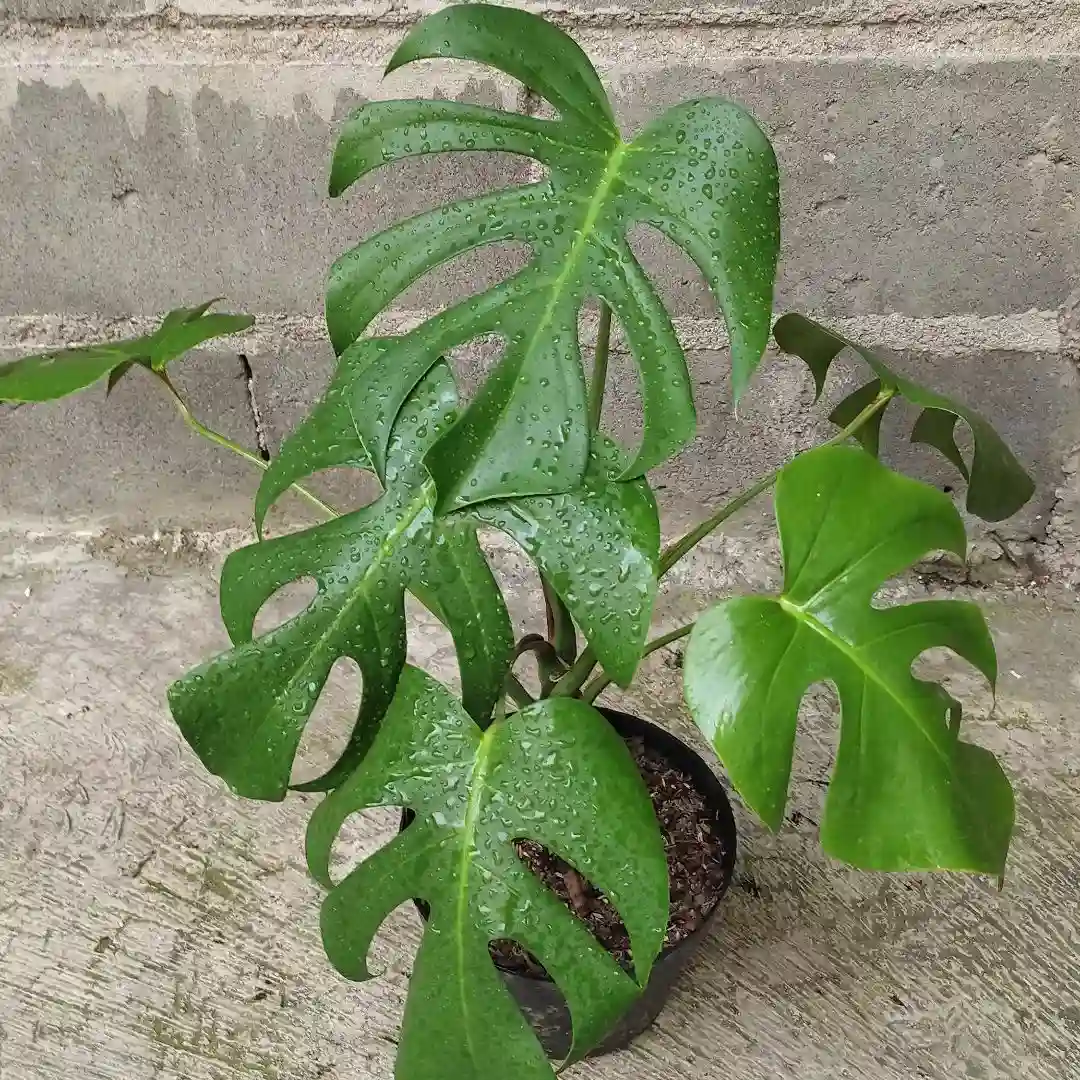
2 Types of Monstera With Subtle Differences
The two Monstera varieties deliciosa and borsigiana, though closely related, exhibit subtle differences. One key distinction lies in the distance between their nodes. Monstera Deliciosa typically has larger internodal spaces, meaning the gaps between the nodes (where leaves and aerial roots emerge) are wider. In contrast, Monstera Borsigiana has shorter internodal distances, resulting in a more compact appearance. Additionally, Borsigiana often grows at a faster rate and has slightly smaller leaves compared to Deliciosa. These differences can help enthusiasts accurately identify and care for these captivating tropical plants.
3) Monstera Adansonii
Say hello to the Swiss cheese vine, a captivating climber with charming, holey leaves. This fast-growing type of Monstera from Central and South America loves to drape elegantly from baskets or shelves, adding a touch of jungle chic to your home. It's been one of the top 10 most wanted rare houseplants for many years.
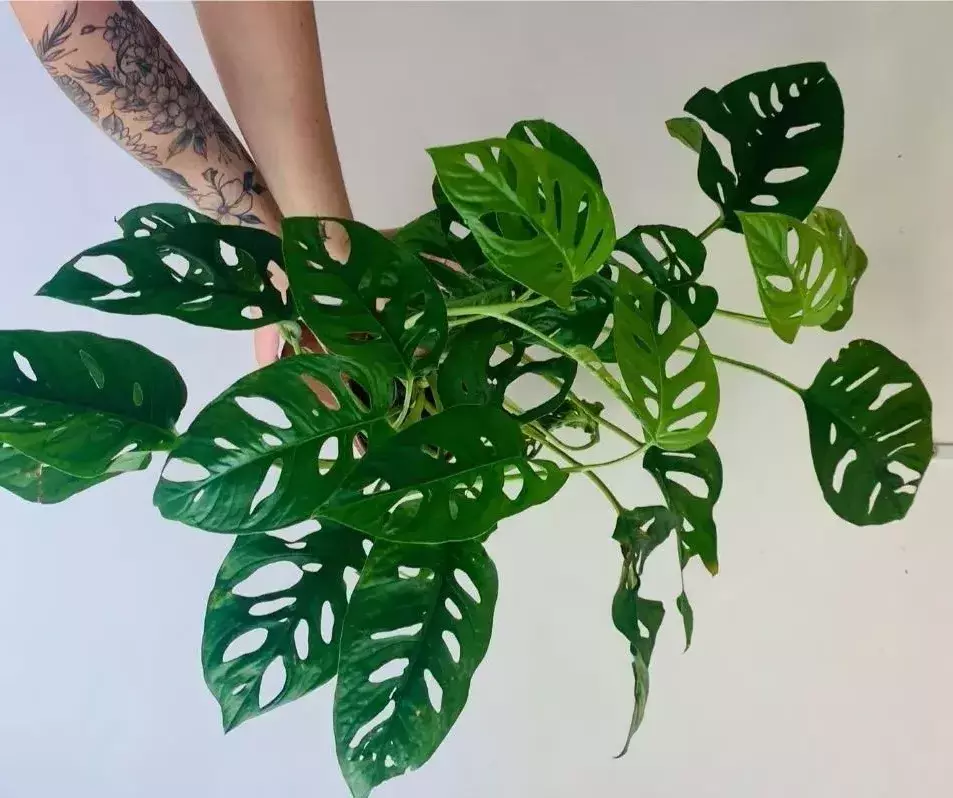
4) Monstera Siltepecana
Dazzle your senses with this silver-green beauty, boasting elongated leaves that shimmer with a metallic sheen. This Monstera variety climbing nature adds an extra touch of enchantment to your indoor jungle.
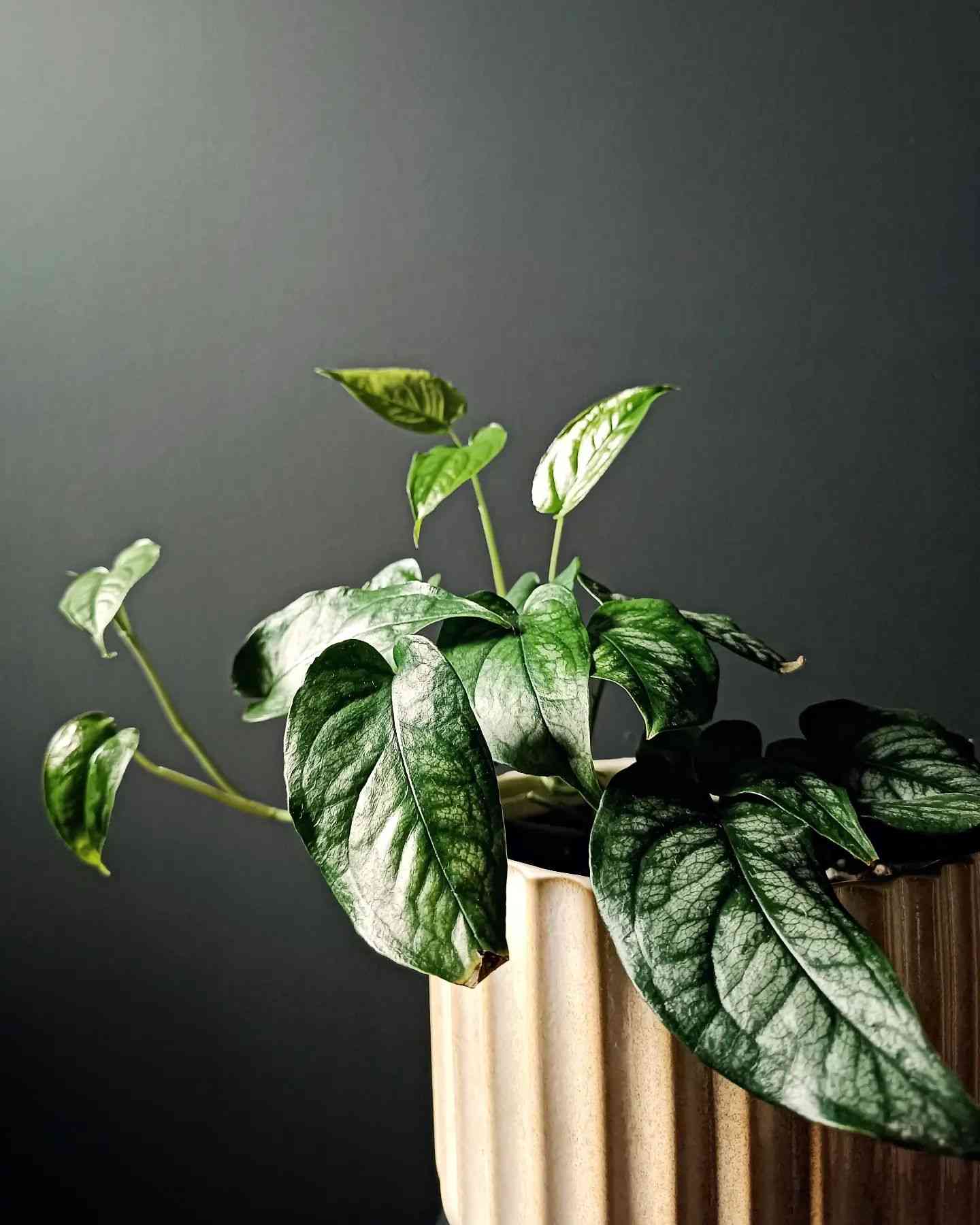
5) Monstera Pinnatipartita
Admire the striking, deep splits on this glossy-leaved Monstera variety that extend to the midrib. A showstopper guaranteed to turn heads and elevate your plant game!
6) Monstera Dubia
A rare find for true plant aficionados! With its small, heart-shaped leaves that lay flat against surfaces, this unique type of Monstera brings a distinct touch of intrigue to any plant collection.
7) Monstera sp. Peru
Also known as Monstera Karstenianum, this alluring species charms with its thick, dark green, textured leaves. A marvelous addition for those seeking the perfect blend of intrigue and beauty within all types of Monstera plants.
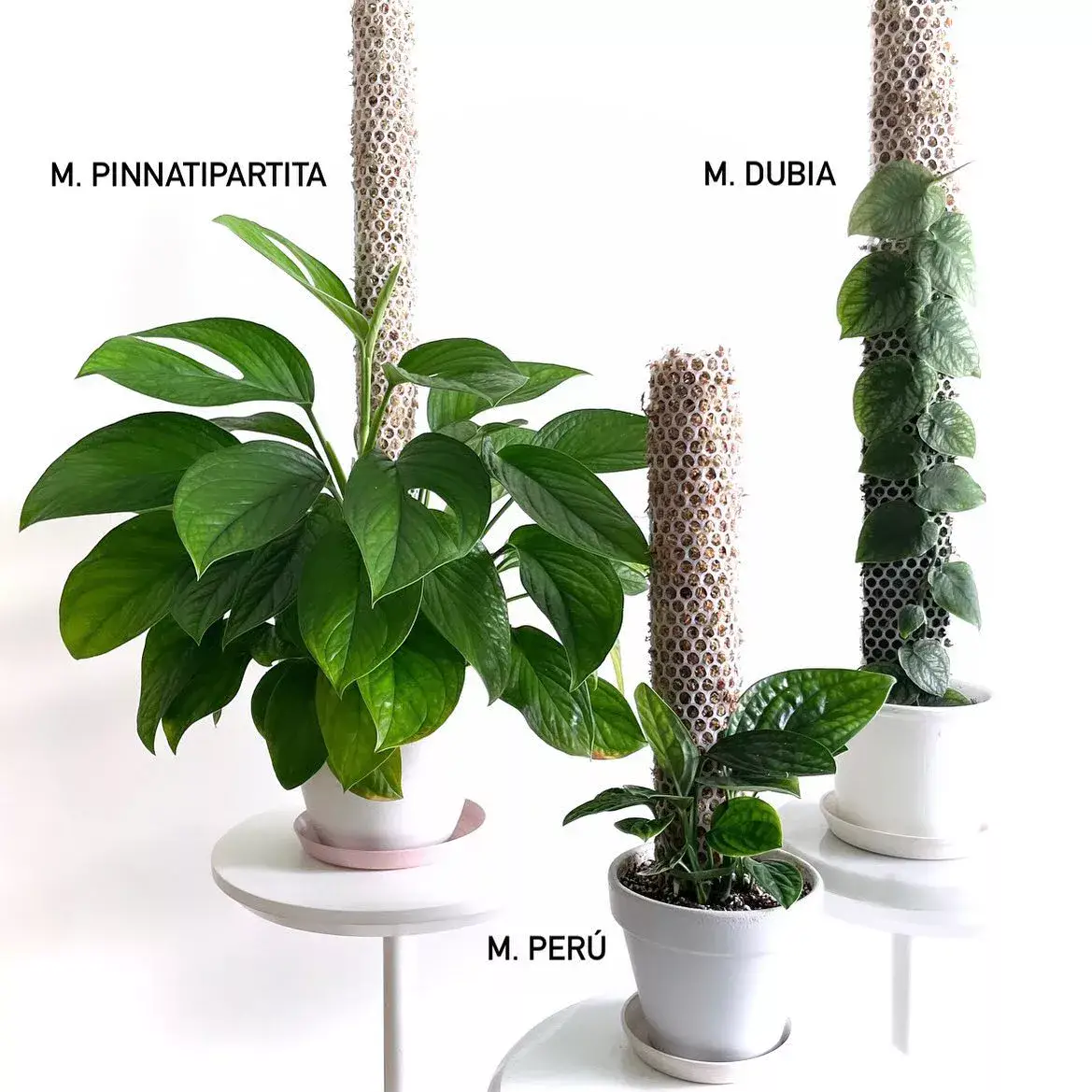
8) Monstera Obliqua
The elusive Monstera obliqua captivates with its delicate, paper-thin leaves filled with large holes. A must-have for collectors seeking the most extraordinary type of Monstera! This rare houseplant is only for the most avid plant lovers because it is one of the rarest monstera varieties out there and it's an expensive challenge only the most passionate plant parents attempt.
9) Monstera Standleyana
The cobra plant slithers into our hearts with its long, variegated leaves that range from white to yellow. A fabulous addition for lovers of all things exotic!
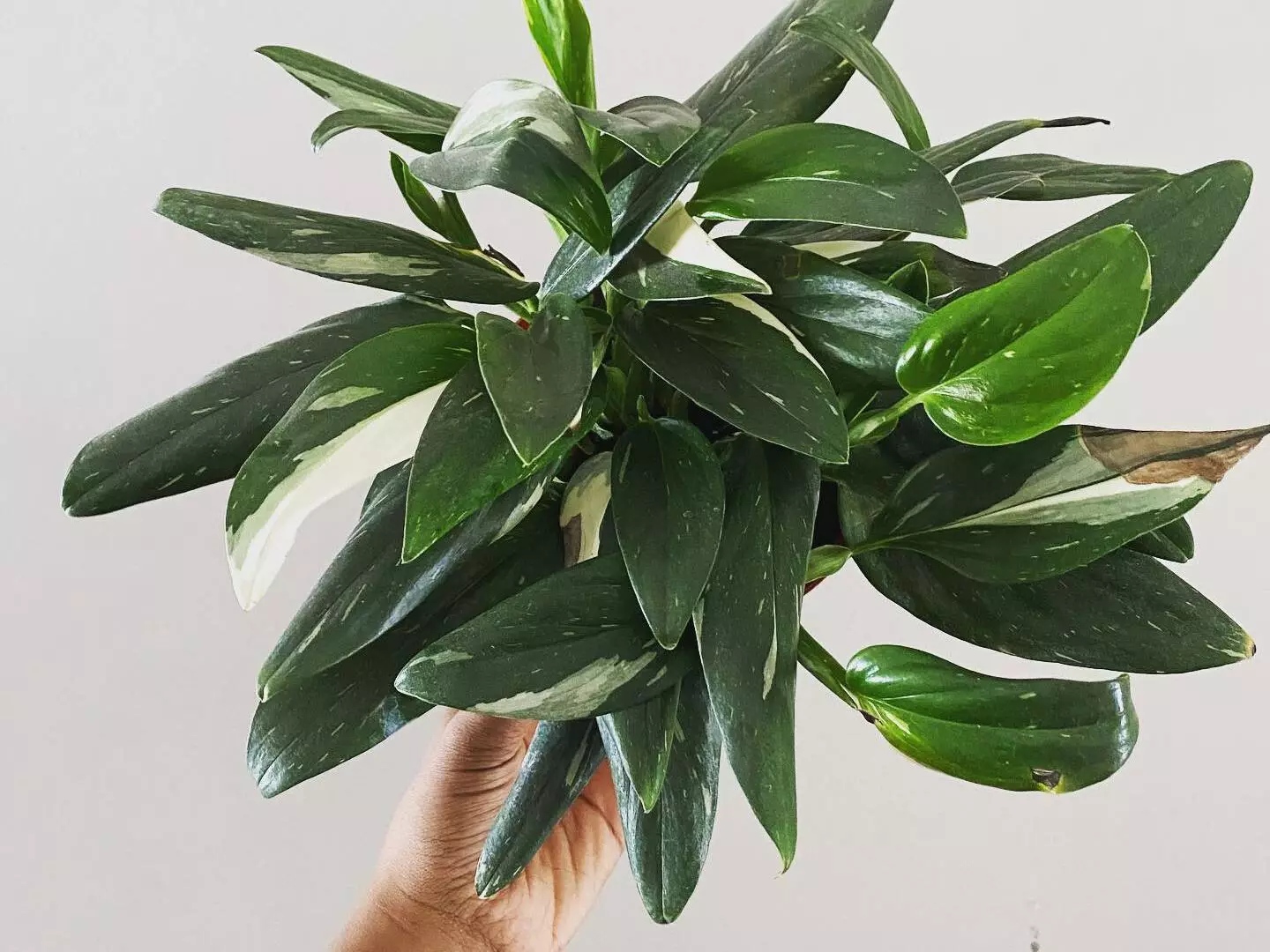
10) Monstera Lechleriana
With its large, glossy leaves peppered with numerous holes, this elegant climber bears a resemblance to Monstera adansonii, yet carries an elongated charm all its own.
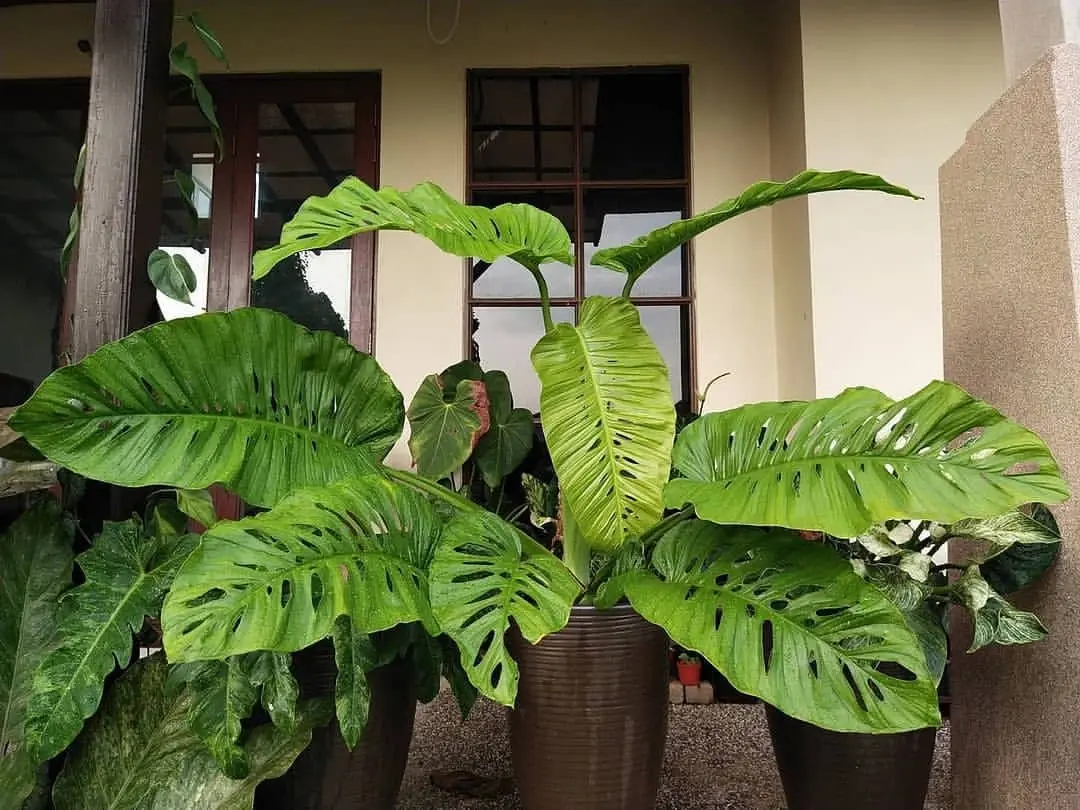
11) Monstera 'Thai Constellation'
This celestial cultivar, a variant of Monstera deliciosa, lights up any room with its creamy-yellow variegated leaves. A heavenly choice for those who adore a touch of the unique. The Thai constellation is a very special plant, making this plant very different from the other types of Monsteras.
12) Monstera 'Albo Variegata'
Stand out with this stunning Monstera deliciosa cultivar, featuring captivating white or cream variegation that adds a touch of elegance to any plant collection. Many plant collectors around the world crave this white-leaved Monstera variety, making it one of the most expensive houseplants for a reason.
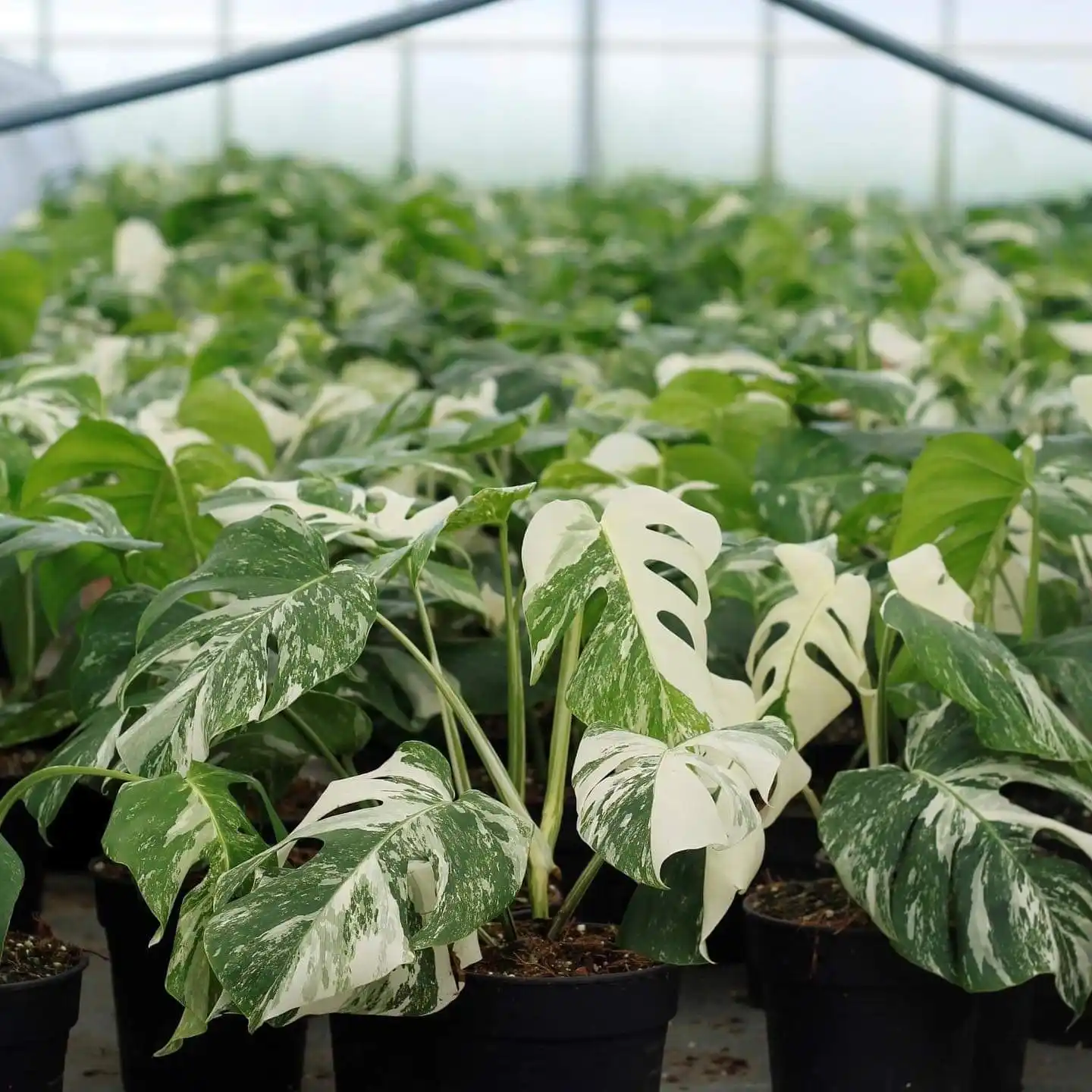
13) Monstera 'Aurea Variegata'
Brighten up your space with this Monstera deliciosa cultivar, showcasing eye-catching yellow variegation that brings a pop of color and joy to your indoor oasis. It's called the 'Lemon and Lime-Colored Swiss Cheese Plant' for a reason!
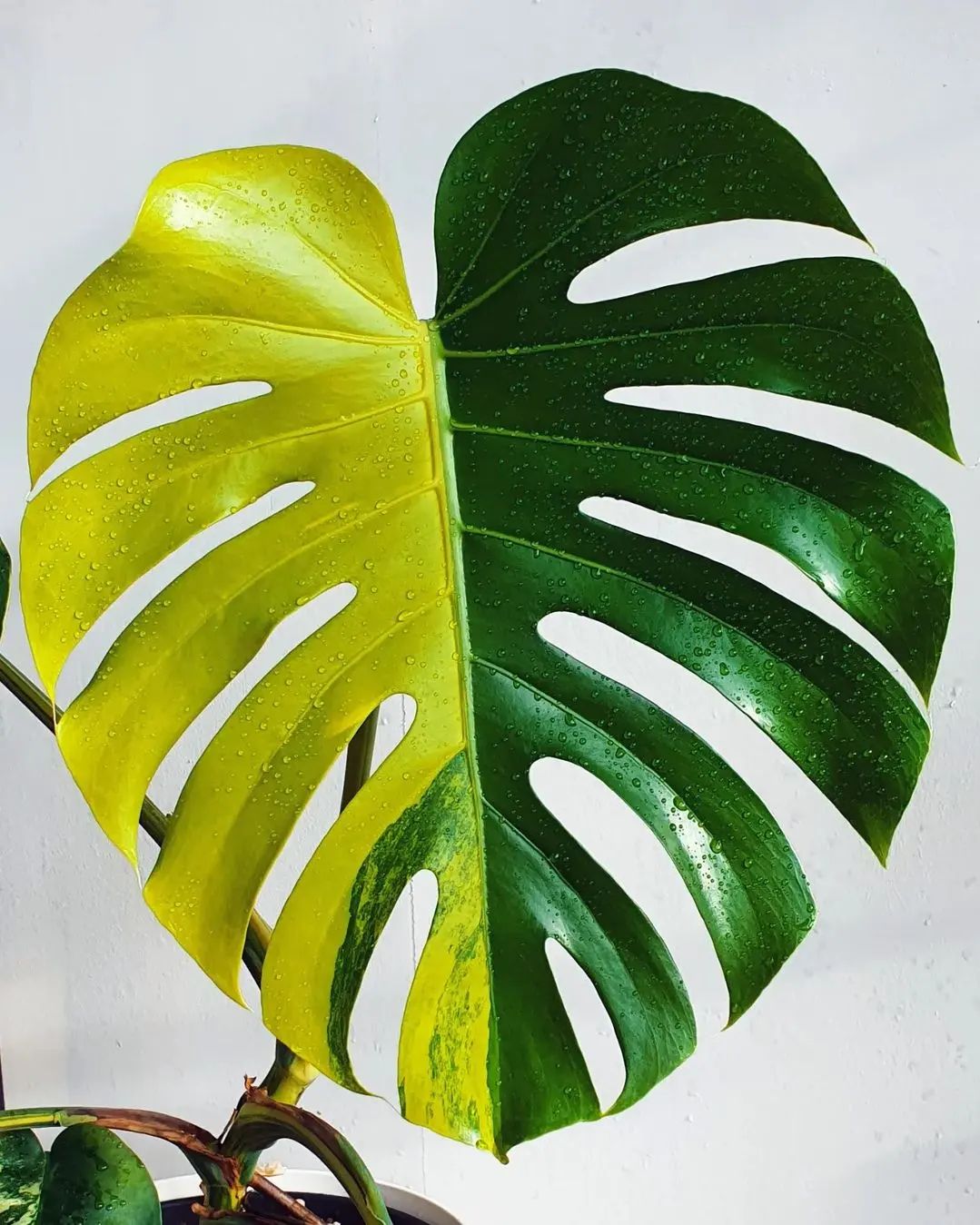
There are more variegated varieties of Monstera. Also, the naming for the variegation differs with its coloring. The variegation is namely between the 3 types of Monstera plants: Monstera Deliciosa, Monstera Borsigiana, and Monstera Obliqua (a.k.a. Monstera Adansonii). But more types of Monstera can have variegations.
14) Monstera Esqueleto
Embrace the extraordinary with this rare variety, featuring dramatic leaves that resemble a leaf's skeleton. A conversation starter that will leave plant enthusiasts in awe!
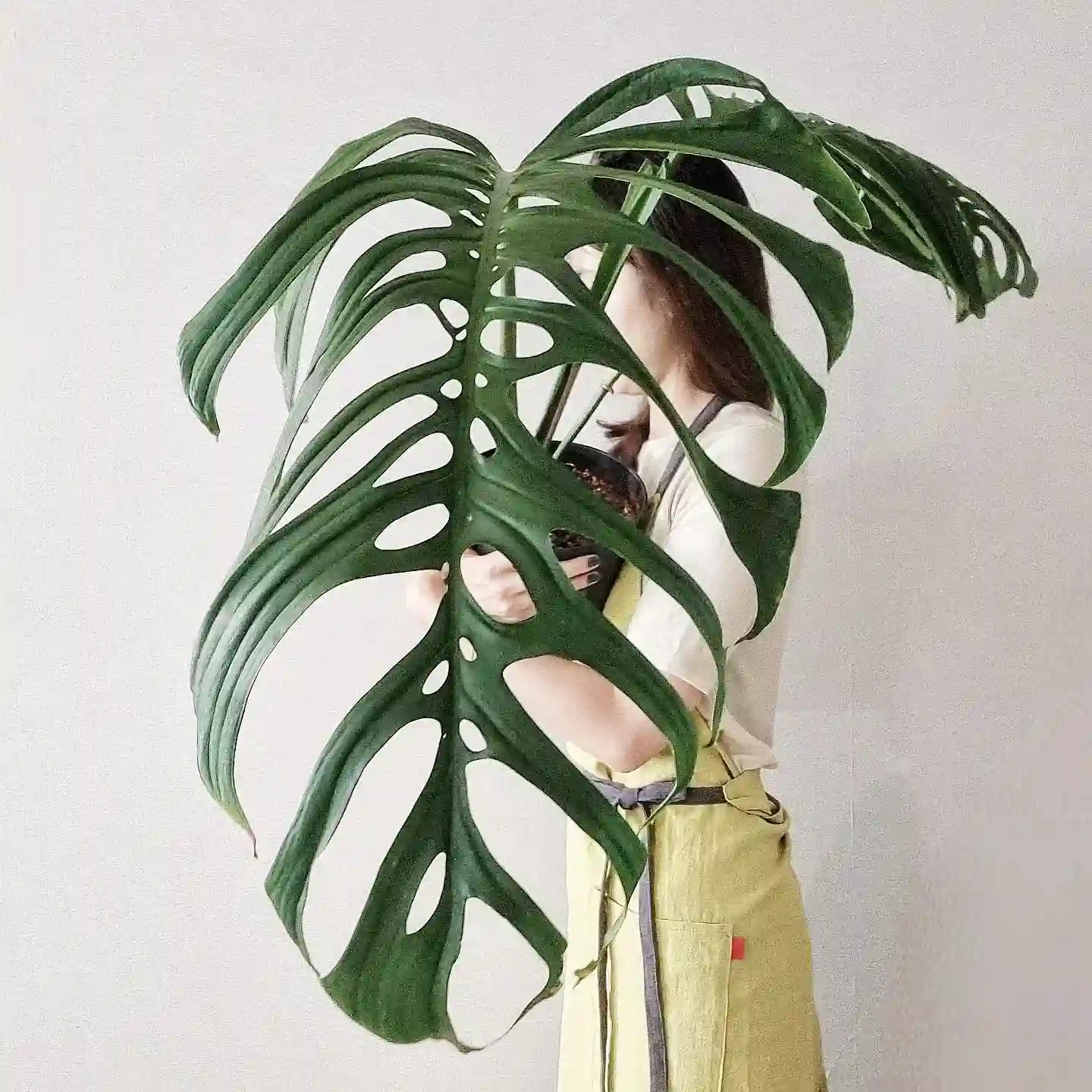
NOT Monstera Varieties — But Close Look-A-Likes
There are a few other plants that are sometimes mistakenly called Monstera due to their similar appearance, particularly their fenestrated or split leaves. Here are a couple of examples:
Mini Monstera
Scientifically known as Rhaphidophora tetrasperma, is a delightful, tropical houseplant that's often mistaken for a true Monstera due to its charming, split leaves. Despite the resemblance, this lovely climber belongs to a different genus, Rhaphidophora. Its petite size and rapid growth make it perfect for those craving the Monstera aesthetic in a more compact form. Embrace this captivating, easy-to-care-for plant, and let it add a touch of lush, tropical splendor to your indoor haven!
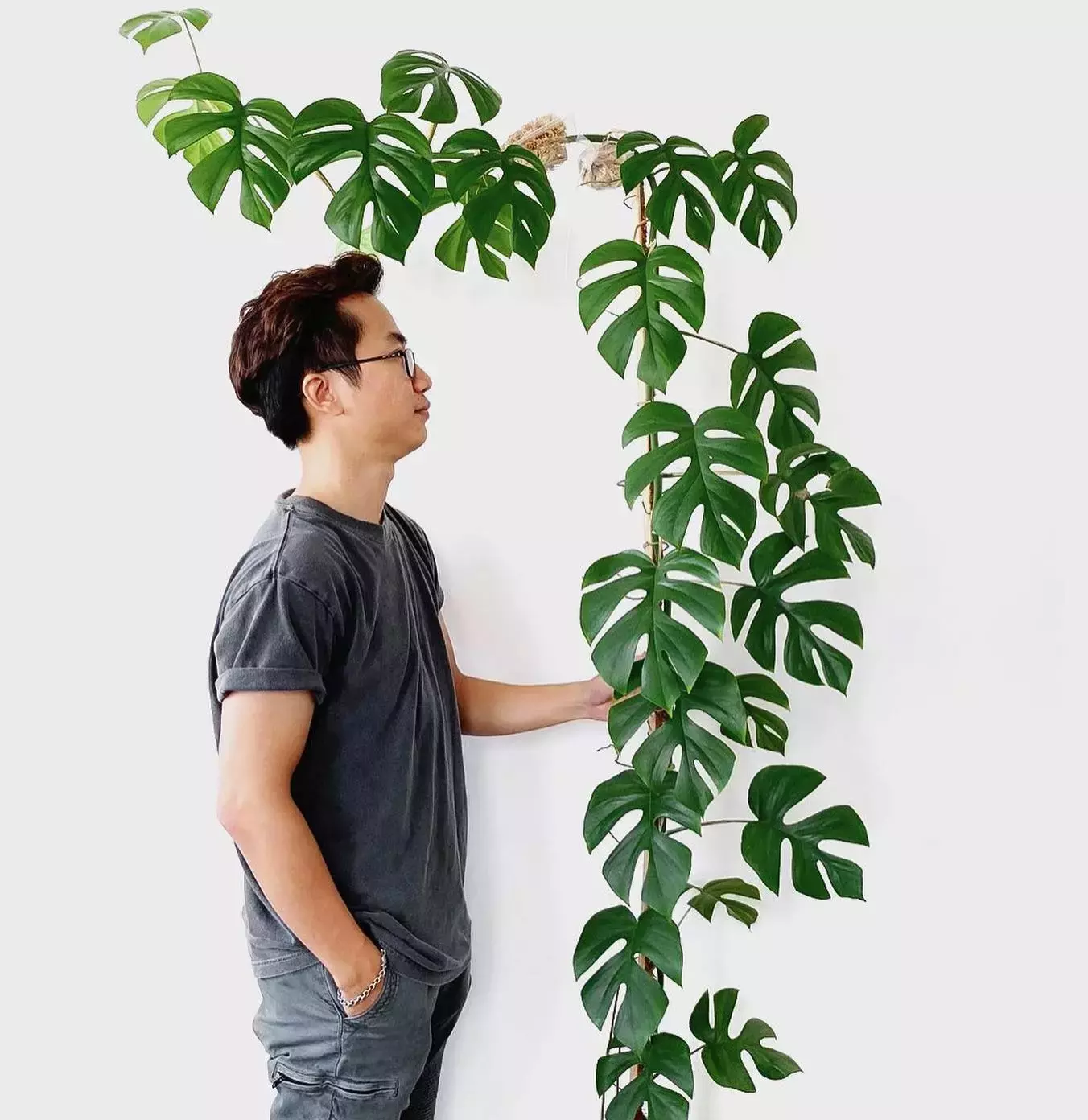
Epipremnum Pinnatum Cebu Blue
Also known as the Cebu Blue Pothos, this climbing plant is a member of the Epipremnum genus, not a Monstera variety. It has elongated, blue-green leaves that may develop splits and fenestrations as the plant matures, contributing to the confusion with Monstera species.
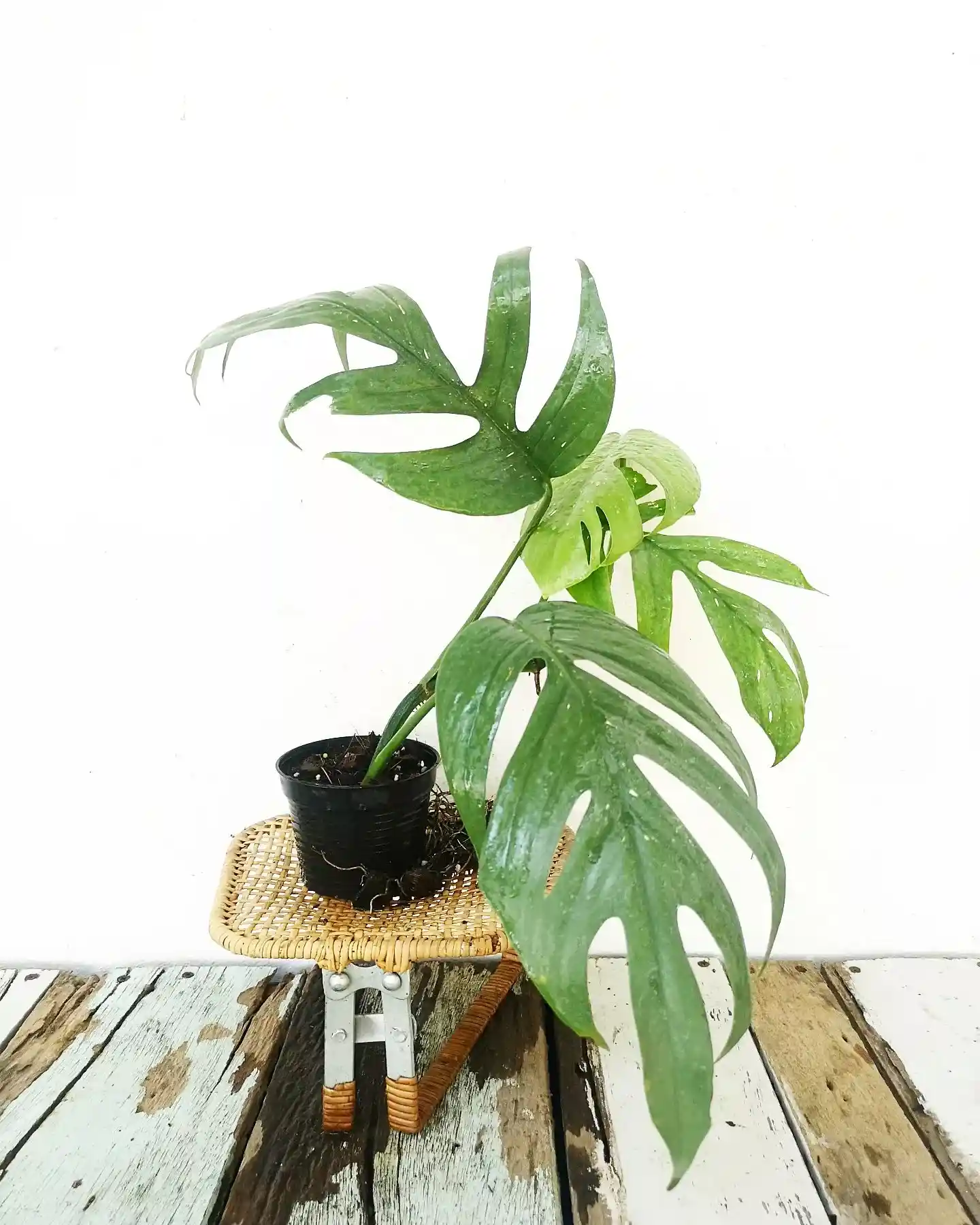
Philodendron Bipinnatifidum (Formerly Known as Philodendron Selloum)
Commonly known as the Lacy Tree Philodendron or Hope Philodendron, this plant is a member of the Philodendron genus. It has large, deeply lobed leaves that can resemble those of some Monstera varieties, leading to occasional misidentification.
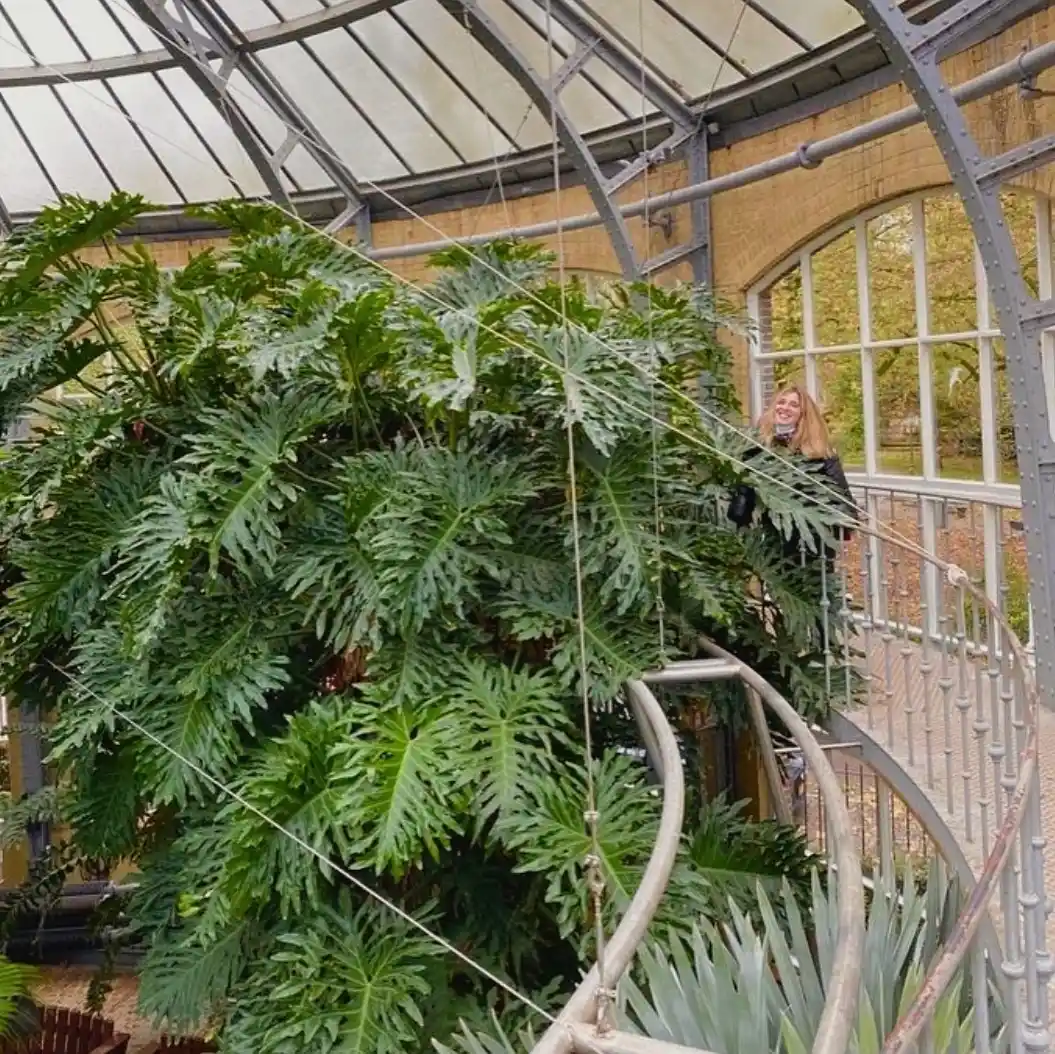
With its beautiful vivid green leaves and vigorous growth, the Philodendron bipinnatifidum is quite the eye-catcher.
General Care for All Types of Monstera Plants
While many Monstera species share similar care requirements, there can be slight differences based on each variety's specific needs. Here are some general care guidelines for most Monstera varieties, followed by some specific considerations for certain species:
General Monstera Varieties Care
-
Light: Monsteras generally prefer bright, indirect light. Prolonged direct sunlight can cause leaf scorching, while insufficient light may result in slow growth and smaller leaves.
-
Water: Water your Monstera when the top 1-2 inches of soil feels dry to the touch. Overwatering can lead to root rot, while underwatering may cause the plant to become stressed and develop yellow leaves.
-
Humidity: Monsteras typically thrive in moderate to high humidity. A humidity level of 50-60% is ideal. You can maintain humidity by using a humidifier, placing a tray of water near the plant, or misting the leaves regularly.
-
Temperature: Most Monstera species prefer temperatures between 65-80°F (18-27°C). Keep them away from cold drafts, and avoid temperatures below 50°F (10°C).
-
Fertilizer: Feed your Monstera with a balanced, water-soluble fertilizer diluted to half strength every 4-6 weeks during the growing season (spring and summer). Reduce feeding in fall and winter.
-
Pruning: Regularly prune your Monstera to maintain its shape and size, and remove any dead or yellowing leaves.
-
Support: Provide a moss pole, trellis, or other support for climbing varieties to encourage growth and stability.
Specific Care Considerations
-
Monstera Adansonii: This species may require more frequent watering compared to other varieties, as it prefers slightly moist soil. It also appreciates higher humidity levels.
-
Monstera Dubia: This variety thrives in a well-draining, slightly moist soil mix, and requires a support structure, such as a wooden board or cork bark, to climb and attach to using its aerial roots.
-
Monstera Obliqua: This rare species is more sensitive and requires higher humidity levels and consistent care to thrive.
-
Variegated Monsteras (e.g., 'Thai Constellation', 'Albo-Variegata', and 'Aurea-Variegata'): Variegated varieties may need more light than their non-variegated counterparts, as the variegated parts of the leaves do not photosynthesize as efficiently. However, be cautious not to expose them to harsh direct sunlight, which can scorch the leaves.
Remember that the specific care requirements may vary slightly based on your home's conditions and the individual plant's needs. It's essential to monitor your Monstera and adjust care as needed to ensure it thrives.
In the enchanting world of Monstera, a treasure trove of captivating varieties awaits, each with its own distinct charm. From the iconic Monstera Deliciosa to the rare and alluring Monstera Obliqua, these tropical beauties offer endless possibilities for personal expression and connection to nature. Embrace the diversity of these stunning types of Monstera, and let them transport you to a lush, exotic paradise. As you curate your indoor oasis, remember that each Monstera variety brings a unique story, inviting you to become a part of its vibrant, ever-evolving tapestry.
Header and featured image by @ourplantylifeinboston.

